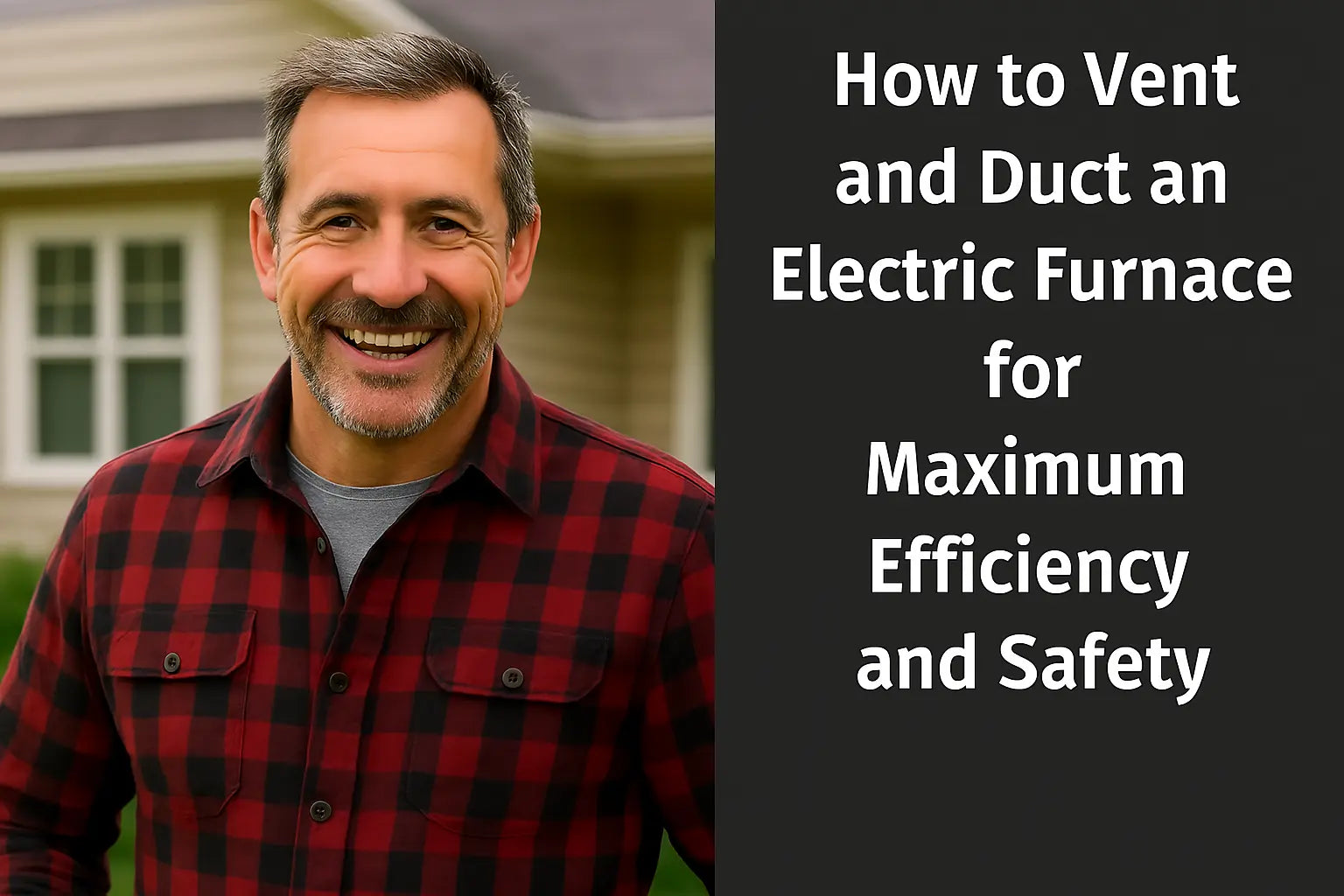Mike’s Intro 👨🔧
Howdy friends—Mike Sanders here, and we’re talkin’ ducts today. Now, I know what you’re thinking: “Mike, it’s an electric furnace, there’s no combustion, so why do I need to think about venting or airflow?” Well, let me tell ya—bad ductwork is like trying to run a marathon in steel-toed boots. Your furnace might fire up just fine, but you’ll be sweating or shivering in no time if the air’s bottlenecked or leaking out into the attic. Let’s fix that.
Do Electric Furnaces Need Venting?
Technically, electric furnaces don’t need combustion venting like gas furnaces do, because there’s no flame involved. But that doesn’t mean airflow isn’t crucial. Instead of worrying about CO2, you’ve got to worry about heat transfer and air balance. Poor airflow = poor comfort, wasted energy, and sometimes even system failure.
📌 Want the full picture on furnace types? The folks over at U.S. Department of Energy give a solid breakdown of electric versus gas systems and what venting really means.
The Airflow Equation: Return, Supply, and Static Pressure
When we’re talking about airflow, there are a few main parts to pay attention to:
-
Return Ducts – Bring air into the furnace.
-
Supply Ducts – Push conditioned air out to your home.
-
Static Pressure – The resistance air faces while moving through ducts.
If your return is undersized or blocked, the furnace pulls too hard and runs hot. If your supply is too small, the air just gets jammed up. Think of it like a two-lane road trying to handle freeway traffic—it ain’t happening without problems.
According to Energy Vanguard, high static pressure is the silent killer of HVAC systems, and electric furnaces are no exception.
Ductwork Mistakes I See All the Time (and How to Avoid ‘Em) 🚧
Here are a few slip-ups I’ve seen out in the field that you should avoid at all costs:
1. Undersized Ductwork
If the duct is too small, your blower motor strains like crazy. That cuts its lifespan, makes your house louder than it should be, and ruins energy efficiency. Always size ducts based on CFM (cubic feet per minute), not guesswork.
2. Long, Twisting Runs
Air doesn’t like obstacle courses. The more turns and long runs you add, the more resistance builds. Keep it short and sweet when possible.
3. Leaky Connections
Every joint or seam is a chance for warm air to leak into your attic or crawl space. Seal those babies up with mastic (not duct tape—that’s a rookie move 🙃).
Need a crash course in proper duct sealing? Energy Star’s duct sealing guide lays it all out.
Tips for Electric Furnace Duct Design 🛠️
A well-designed duct system will have:
-
Proper return-to-supply balance
-
Airflow measured and verified (via a tech using a manometer)
-
Sealed connections
-
Insulated ducts in unconditioned spaces
And remember—don’t just rely on your installer. Ask them if they’ve measured static pressure and CFM. If they just shrug, that’s a red flag.
What About Filter Placement?
Here’s another detail homeowners overlook: filter location. For an electric furnace, it’s best to install the filter at the return grille or directly before the blower. Avoid stacking filters or using super-restrictive ones unless the furnace is designed for it.
Want to deep-dive into filter placement and airflow? HVAC School’s podcast does a killer job explaining airflow physics in layman’s terms.
Zoning and Airflow: When One Room’s a Sauna and Another’s an Icebox 🥵❄️
Zoning can help balance things out in multi-room homes, but it only works if your duct system is designed for it. Don’t just slap on a damper and call it a day—zoned systems need bypass ducts, pressure relief, and a smart thermostat setup.
Check out HVAC.com's zoning guide for more details on what zoning really takes to pull off properly.
Signs Your Airflow Needs a Checkup 🔍
Here are the warning signs I look for when I walk into a house:
-
Hot and cold spots in rooms
-
Loud whooshing or whistling from vents
-
Furnace short cycling or running nonstop
-
Dust blowing from vents (bad sign!)
-
Burning smell or overheating (common with undersized return)
If you're seeing any of that, it’s probably time for a duct redesign or airflow test.
Should You Call a Pro or DIY It?
If you're just replacing a register or resealing a duct, go for it. But for designing or modifying ductwork, bring in a certified HVAC technician who understands Manual D calculations (the method used for duct sizing). Otherwise, you're just guessing—and that costs money in the long run.
Pro tip: When in doubt, look for a contractor certified by ACCA, the Air Conditioning Contractors of America. They follow best practices that keep airflow balanced and efficient.
Mike’s Wrap-Up 🍺
So yeah, just ‘cause your electric furnace doesn’t burn fuel doesn’t mean you get to skip the airflow talk. Venting may not involve a chimney, but ducts, returns, static pressure—that’s the heart of the system right there. If your air’s not movin’, your comfort ain’t groovin’. Want to play it smart? Start with quality ductwork and airflow design from the get-go.
Need a solid electric furnace to start from? Check out The Furnace Outlet’s electric furnace collection. They’ve got top-notch systems that are airflow-friendly and ready to heat without the headaches.
Curious about how to safely wire your electric furnace? Visit my guide: A Homeowner’s No-Nonsense Guide.
Stay warm, stay smart, and I’ll catch you next time. 👋
- Mike, your cool HVAC neighbor







